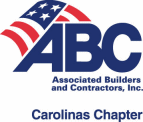 As folks who travel in sustainability circles know well, the Leadership in Energy and Environmental Design green rating system, better known as LEED® certification, is far and away the industry leader when it comes to validating green construction projects. Developed by the Washington, D.C. non-profit the U.S. Green Building Council (“USGBC”), LEED had been used to certify the green bona fides of more than 55,000 projects around the world as of October 2013; by way of comparison, a rival system, Green Globes, had been used for just 850.
As folks who travel in sustainability circles know well, the Leadership in Energy and Environmental Design green rating system, better known as LEED® certification, is far and away the industry leader when it comes to validating green construction projects. Developed by the Washington, D.C. non-profit the U.S. Green Building Council (“USGBC”), LEED had been used to certify the green bona fides of more than 55,000 projects around the world as of October 2013; by way of comparison, a rival system, Green Globes, had been used for just 850.
My Twitter feed has featured a series of “good news” chirps for USGBC lately. For example, about a month ago, the agency touted its release of the 2013 Top Ten States for LEED (North Carolina cracked the top ten at #7):
Locally, Barnhill Contracting promoted a Triangle Business Journal slideshow featuring some high-profile Triangle projects to obtain LEED certification recently:
https://twitter.com/BarnhillCC/status/436692686863482880
But another series of tweets reveals that the USGBC is facing unprecedented challenges that call into question its continued dominance of the rating system marketplace. As best as I can tell, these challenges fall into three categories: (1) its competitor, Green Globes, is starting to make inroads; (2) some state legislatures are seeking to ban use of LEED on public construction projects; and (3) the adoption of green building codes by state and local governments calls into question the value of voluntary rating systems like LEED and Green Globes altogether.
(1) Rival Green Globes Is Gaining Some Traction. The following tweet from the N.C. Subcontractors Alliance (“NCSA”) caught my eye last weekend:
The linked blog post summarizes a meeting NCSA had with a representative from Balfour Beatty who apparently touted Green Globes as a way to achieve sustainability “without all the rules and paperwork involved in the LEED program.” On a national level, the American Institute of Architects has also taken note of Green Globes’ rise:
The linked story discusses some of the usability and cost benefits of Green Globes, but also cites criticism that the rating system’s developer, Portland, OR non-profit Green Building Initiative (“GBI”), might be a bit too cozy with building material manufacturers and timber industry stakeholders. The relationship between GBI and industry was the subject of a blistering January blog post written by the USGBC’s Senior Vice President purporting to offer GBI’s incoming CEO advice “to improve Green Globes’ sorry reputation.” The blog post has received some sharp criticism, including this chirp from former LEED-AP Chris Cheatham:
Chris goes on to suggest in the blog post’s comment section that the USGBC appeared “to be cracking under the pressure from a bit of competition.” True or not, it’s clear Green Globes has gotten the USGBC’s attention.
(2) LEED Is Being Challenged in State Legislatures. Last year, the North Carolina General Assembly thwarted an attempt to ban the use of LEED on public construction projects; the bill’s sponsor had argued that the system disadvantaged local timber interests. The effort continues in other state legislatures, however, as the following tweet from Indiana construction attorney William Kelley, Jr. reveals:
I highly recommend the blog post linked in William’s chirp, which discusses the politics of such state legislation from the point-of-view of a LEED advocate / GBI critic. Fascinating stuff.
(3) The International Green Construction Code (“IgCC”) Is Coming. More and more states and municipalities are adopting the IgCC as a minimum standard for green construction (including North Carolina, in part). Dallas, TX, one of the first cities to adopt the standard, is beginning its ramp-up:
https://twitter.com/go_AXIOM/status/440578436713959424
Codes, of course, establish minimum standards or “floors,” while LEED establishes aspirational “ceilings” for what can be achieved in sustainable design and construction. That distinction suggests IgCC and voluntary rating systems like LEED and Green Globes can coexist. But if the marketing benefit LEED certification confers upon a project can be achieved through code compliance alone, will owners go the extra mile and expend time, energy and cost on voluntary, third-party certification?
It’s an open question, one to which this casual observer has no answer. In any event, it goes without saying that the USGBC no longer enjoys the green construction playing field entirely to itself. It has entered a new period in its still relatively young history, and its future suddenly seems less assured. How the green goliath adapts to this new environment should be fascinating to watch.
What about you? Are you intrigued by recent goings-on in the green building community? What’s your prediction for LEED’s future? The Friday Forum microphone is all yours.
UPDATE 9:30 a.m. 3/9/14: In response to my post, Chris Cheatham made a bold prediction about the green building industry’s future:
William Kelley agreed that changes were likely, but believes that “green” will adapt:
UPDATE 11:00 a.m. 3/10/14: Virginia construction attorney Christopher Hill muses about the state of “green” in his latest blog post. Not to be missed.
Meanwhile, yet another threat to the USGBC has emerged recently, one that I did not cover in my initial post: the Environmental Policy Alliance. It published an opinion piece critical of LEED in yesterday’s USA Today online. Who is the Environmental Policy Alliance? Lloyd Alter of treehugger.com investigates.








Ha. I had forgotten about that tweet. Quite scathing, but I stand by it.
Reblogged this on South Carolina Construction Defect Law and commented:
LEED construction and where it is headed
Pingback: More Thoughts on “Green” (the Practice, not the Color) Building | Construction Law Musings- Richmond, VA
The ‘green fix’ will be difficult, but I believe the core, intent and purpose of LEED and other green initiatives will survive. Unfortunately, without embracing robust QA/QC measures and true resilient/durable design, we will continue to see emphasis on style over substance. We are simply asking more and more from our buildings, but we know less, and less about the materials, assemblies, and system that go into them.